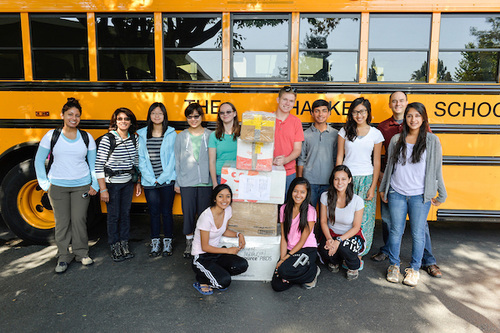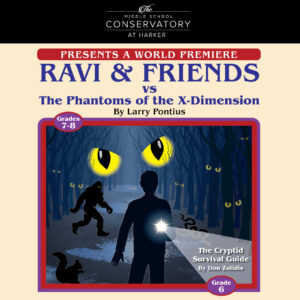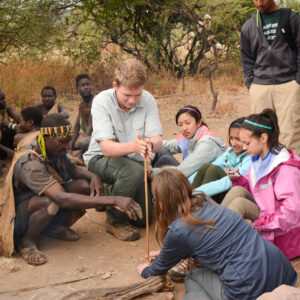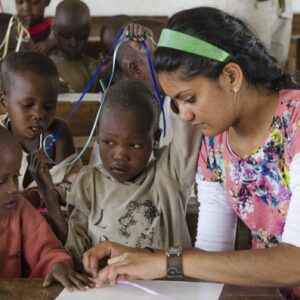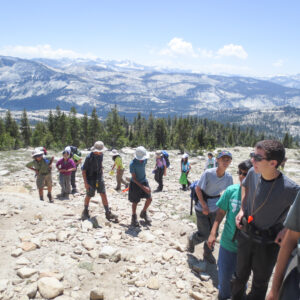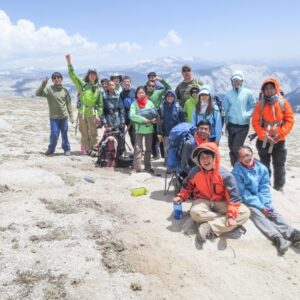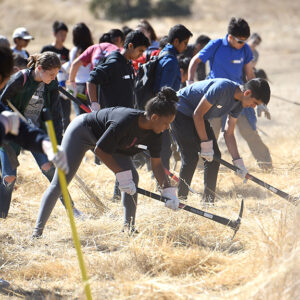More than a dozen Harker students are on a summer research trip in Tanzania, and upper school biology teacher Mike Pistacchi sent some updates on this amazing trip!
June 7:
We woke up this morning to the sight of zebras and elands drinking from a pond 100 feet from our rooms. Then we headed out to Mt. Kilimanjaro for a beautiful hike through a pristine cloud forest (we only stopped 17,000 vertical feet short of the summit!). We then drove down to the savannah where, on the way to our lodge in Tarangire National Park, we sighted zebras, elephants, warthogs, impalas, vervet monkeys and a brown snake eagle! Now we are sitting on the lodge patio with a 180-degree view out over the park as we wait for dinner to be served. Tough life on safari …
June 8:
Today we had an amazing day, spending the entire time exploring Tarangire National Park by Jeep. We saw an absolutely stunning number of animals today, including impalas, zebras, elephants, the largest buffalo herd imaginable (think 500-plus giant animals all staring at your car) and even found ourselves in the midst of a group of female and baby elephants that wandered within 20 feet of our Jeeps while we snapped pictures. We also conducted our first transect study, as the students collected data including animal counts, group sizes, GPS locations and distributions. We will be comparing the data collected today with the data from three other parks as we assess biodiversity in various ecosystems. Other activities today included discussions of legal and social issues in the country, the ecological importance of permanent water sources in the savannah and the increasing fragmentation of giraffe populations in Africa. So yes, we are tired, but happy!
Tomorrow morning we leave to study anthropology in the Olduvai Gorge World Heritage Site (where our earliest hominid ancestors lived) and then head to a three-night stay in the Serengeti National Park.
June 12:
We’re now lounging in the extremely plush Ngorongoro Sopa Lodge after three amazing days and nights “glamping” in a tent camp in the Serengeti wilderness. We had several days of game driving in the Serengeti, in which we saw all of the big five (leopards, buffalo, lions, elephants and rhinos) in one day; most of the group even got to see a cheetah stalk, chase and kill a gazelle (this is a very rare experience). We also were incredibly lucky to see three of the world’s last remaining wild black rhinoceroses in their natural habitat. At night we could hear lions roaring and hyenas laughing outside of our tents. Quite the full-immersion safari experience!
Tonight we are at the aforementioned Sopa Lodge, where our rooms look out over a 4,000-foot drop to the world’s largest volcanic crater (technically a caldera). We can see about 30 miles out over the crater which is full of wildebeests and other wildlife. Needless to say, it is breathtaking.
Tomorrow morning we get a bit of a sleep-in and then we make the transition from “safari” to “cultural and social immersion” as we spend the next three days visiting several tribes and immersing ourselves in their lifestyles. This will include fishing with the Datoga (tomorrow) and a pre-dawn hunting excursion with the Hadzabe, Africa’s last full-time hunting and gathering tribe (note: we will not be doing the hunting!) We will also be visiting and volunteering with the various charity groups that we have been raising money for and running an eye clinic for the Maasai tribe.
June 14:
Today we had the true once-in-a-lifetime experience of meeting and spending the morning with a group of Hadzabe, Africa’s last hunting-gathering tribe. This was not a tourist experience; our guides arranged for us to meet this group based on their long relationship with the tribe. When we found their camp out in the Lake Eyasi wilderness we sat around the campfire with them and both sides asked questions of the other out of mutual curiosity. The Hadzabe were impressed by our students’ politeness and puzzled by our assertions that in our society women can be equal to men even though women are not strong enough to fight off dangerous animals. We asked one Hadzabe woman if she had ever been to the town and she had no idea what a town was. Clearly a unique cultural experience!
On our part, we got to talk to the women about what their lives are like and learn about medicine and how to shoot arrows with the men. After some archery practice we headed out with the skin-clad hunters on a two hour hunt, literally running through the bush with the hunters and their dogs fanning out in front seeking game. The hunters were armed only with bows and a variety of arrows, some poisoned with a local tree sap. They did not manage to find any antelope or baboons (apparently the tastiest animal) but they made some amazing shots and brought down several birds, which they roasted on their fires back at the huts.
After our Hadzabe visit we got on the road and after a stop to do some souvenir shopping (and lots of haggling) we made it to Lake Manyara.
Tonight everyone is totally exhausted, no doubt thanks to the overwhelming cultural immersion of the morning!
